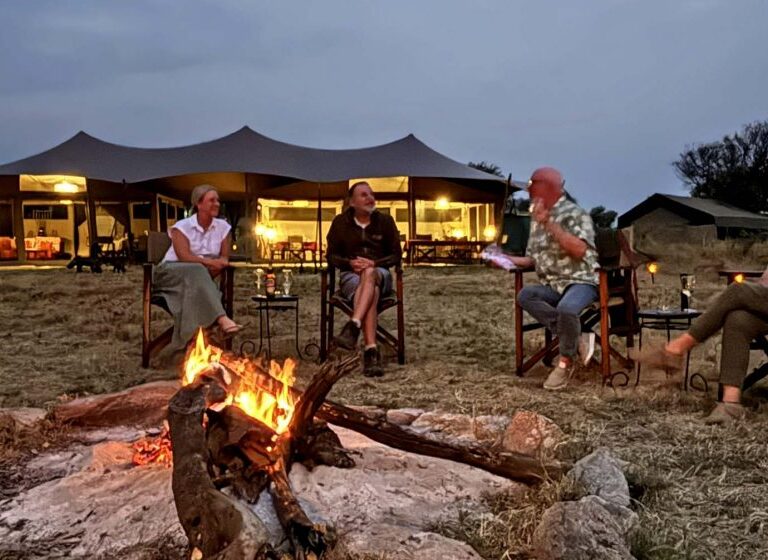Stripes and Stories: Fascinating Facts About Plains Zebras
The African plains zebra, with its distinctive black and white stripes, is a captivating creature that roams the grasslands of Africa. Scientifically known as Equus quagga, these social herbivores are more than just eye-catching; they boast a range of fascinating features and behaviors. In this article, we delve into the intriguing world of plains zebras, exploring their unique characteristics, behaviors, and answering frequently asked questions about these iconic animals. Request free Safari quote for your lifetime safari experience.
1. Distinctive Stripes: Interesting Facts About Zebras
One of the most defining features of the plains zebra is its black and white striped coat. Each zebra’s pattern is as unique as a human fingerprint, and no two zebras share the same arrangement of stripes. The purpose of these striking stripes is a subject of scientific debate. While they may serve as a form of camouflage in tall grass, they are also believed to play a role in confusing predators during group movements, making it difficult for a predator to single out an individual zebra.
2. Social Structures: Cool Facts About Zebras You May Not Know
Plains zebras are highly social animals that form stable family units known as harems. These harems typically consist of a dominant male, several females, and their offspring. Within the herd, zebras engage in mutual grooming, an essential social activity that helps strengthen bonds and remove parasites from their coats.
3. Vocal Communication: Amazing Facts About Zebras
Zebras communicate through various vocalizations, including barks, whinnying, and braying. These vocalizations serve different purposes, from expressing excitement or distress to maintaining contact between herd members. The distinctive “bark” is often heard during times of stress or when danger is perceived.
4. Diet and Feeding Habits: Interesting Facts about Plains Zebra
Plains zebras are herbivores with a diet primarily consisting of grass. Their digestive system is adapted to efficiently extract nutrients from fibrous plant material. These zebras play a crucial role in maintaining the balance of ecosystems by controlling grass levels through grazing.
5. Migratory Behavior: Plains Zebra Facts | Common Zebras
Some populations of plains zebras are known for their migratory behavior, covering vast distances in search of fresh grazing grounds. This movement is often prompted by the changing seasons and the availability of food and water. Migrations also serve to disperse the impact of their grazing on the environment.
6. Predator Avoidance:
Zebras have evolved several strategies to evade predators. Their keen sense of hearing and sight helps them detect potential threats, and their agile bodies allow for quick maneuvers to escape danger. When confronted by predators, zebras may form a defensive formation, with adults encircling the young to protect them.
7. Reproduction and Gestation:
Female zebras give birth to a single foal after a gestation period of about 12 months. The foals are born with their stripes but may have a brownish tint to their fur, which darkens over time. Mother and foal form a strong bond, and the young zebra relies on its mother’s milk for the first few months of life.
8. Endurance and Stamina:
Plains zebras are known for their remarkable endurance and stamina, making them well-suited to cover long distances during migrations. Their ability to extract energy efficiently from a fibrous diet contributes to their physical resilience in challenging environments.
Frequently Asked Questions (FAQs) about Plains Zebras:
Are zebras black with white stripes or white with black stripes?
The base color of zebras is black, and the white stripes are additions. This is evident from the fact that zebras have black skin underneath their fur.
How fast can zebras run?
Zebras are fast runners and can reach speeds of up to 65 km/h (40 mph). Their agility and speed are crucial for evading predators.
What is the purpose of a zebra’s mane?
The mane of a zebra stands erect and serves both as a form of communication and as a means of making the animal appear larger and more intimidating to potential threats.
How many zebra species are there, and where do they live?
There are three species of zebras: the plains zebra, the Grevy’s zebra, and the mountain zebra. Plains zebras inhabit a range of grasslands and savannas across eastern and southern Africa.
Conclusion: 5 Fascinating Facts About Plains Zebra
Plains zebras, with their iconic stripes and intriguing behaviors, are a testament to the wonders of the natural world. From their social structures and migratory habits to their unique vocalizations, these animals continue to captivate the imagination of wildlife enthusiasts and researchers alike. As we unravel the mysteries of these striped wonders, the plains zebra stands as a symbol of the untamed beauty of Africa’s grasslands.








